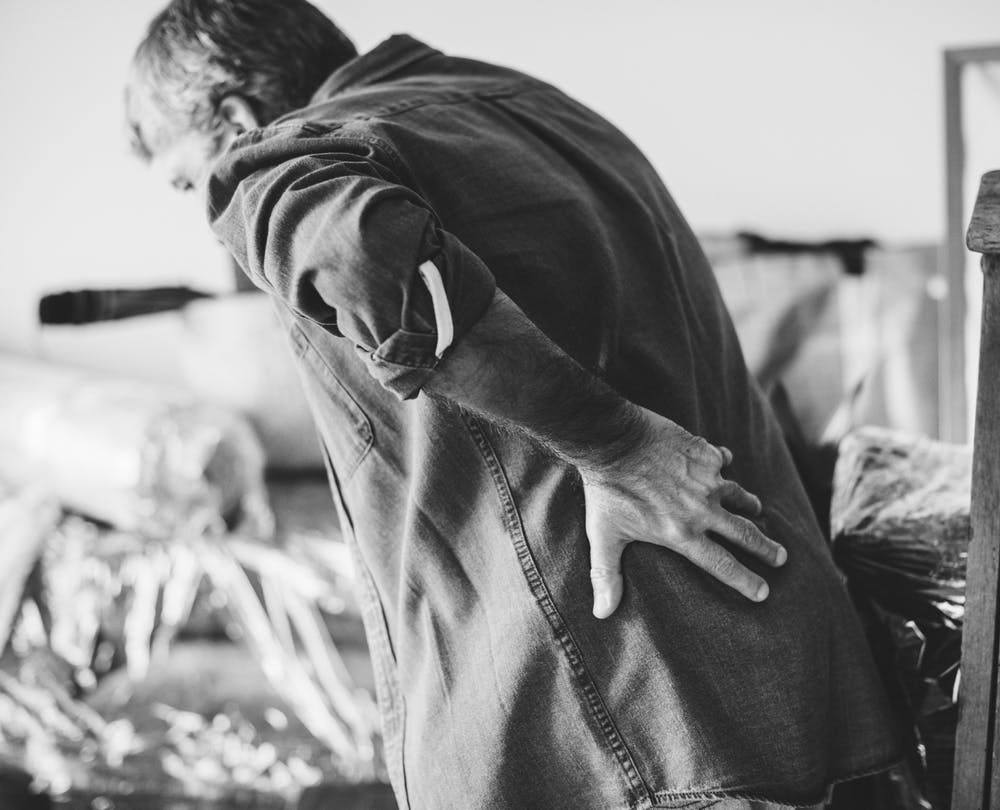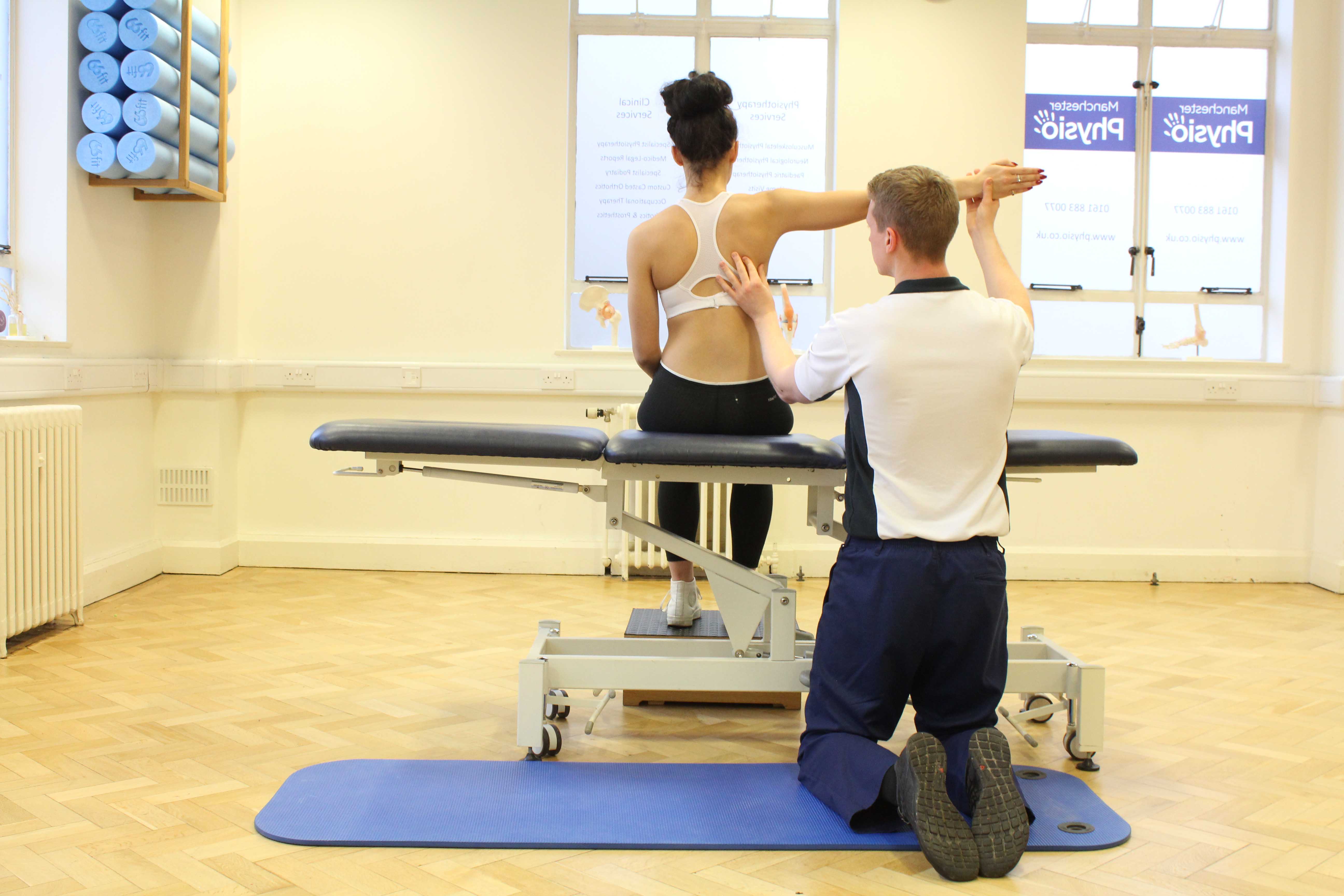nalco group
bone, muscle & joint pain physio
BOOK NOW / WHATSAPP ABOUT YOUR PAIN OR INJURY
- ORCHARD 400 Orchard Road #12-12 Singapore 238875
- TAMPINES 9 Tampines Grande #01-20 Singapore 528735
- SERANGOON 265 Serangoon Central Drive #04-269 Singapore 550265
Home > Blog > Physiotherapy > Pain Relief Physiotherapy > Conditions > Pain Physiotherapy
Pain Physiotherapy

The International Association for the Study of Pain has defined pain as
"an unpleasant sensory and emotional experience associated with actual or potential tissue damage, or described in terms of such damage."
This definition demonstrates and indicates that pain may result from
- actual injury to a tissue
(ie, bone, muscle, tendon) or
- the perceived threat of injury to a tissue (medically termed as "nociceptive pain")
Whether actual tissue damage or perceived threat of injury has
occurred, people will experience pain as real.
Understanding Pain
Pain is one of the most common symptoms that lead a person to seek the help of our senior physiotherapists - we're experts in the management of pain.
First and foremost, we need to understand that successful management of pain relies on an understanding of why someone feels pain. Although much is still being discovered about the sensation of pain, our understanding of how and why pain exists has changed over the past several decade.
A New Understanding of Pain
Pain was once thought to be an indicator of injury to body tissue; but it is now known that pain also can be a warning signal designed to alert us to potential damage and to protect us from injury. As a result of this new understanding, we now know that feeling pain does not necessarily mean a physical injury has occurred.
When a tissue is injured or the potential for injury occurs (such as with shoulder dislocation, spine fracture, elbow fracture or ankle sprain), special nerves called nociceptors send information toward the brain to warn of damage.
Our body then responds in order to minimize damage by sending pain signals to
- make sure the person
doesn’t use/strain the affected body and
- to begin the healing process (ie, produces swelling to bring healing cells to the area).
That being said, we now know that injury-warning pain signals can increase or decrease based on specific situations.
For example, if you sprain your ankle while trying to get out of a burning building, you may not be aware of your injury until you are safe, because the warning signals are overridden for a more important reason: survival.
Science has shown that this decision to rank the importance of warning signals occurs in the brain, which has led to the conclusion that the sensation of pain is triggered by, and occurs in, the brain.
Science has also shown that no two human brains are alike.
Therefore, it follows that each person’s pain experience will be unique—influenced by specific situations such as the one described above, as well as by a range of other factors that make each person’s life unique.
These factors can include
- life experiences over time
- psychological histories
- living and work environments
- and even the social structures in which we live
These past experiences can help to decrease pain in life-threatening situations, but can also increase pain in people with persistent or chronic pain.

Major Implications for Pain Management
The recent shift in the understanding of pain has several major implications.
First, it changes the way our senior physiotherapists may approach your care. In the past, many health care fields focused treatment on the healing of damaged tissue. Although this approach helped many people who had experienced an injury, others reported pain that lasted well beyond the time necessary for tissue to heal.
Based on the new evidence regarding pain, we are today using methods of treatment and of managing pain that do not solely focus on injured tissue, but also considers, factors and addresses other factors such as
- environment
- stress
- psychology
- and social considerations that may be influencing the amount of pain experienced
This “brain and body” approach to the management of pain is an important shift that has occurred in response to the new and evolving understanding of the purpose and nature of pain.
Pain and Opioids
The misuse of opioids has become a public health emergency in the United States and beyond. The origins of the current crisis date back to the late 1990s, when the medical community had no evidence of the addictive properties of opioid-based pain-relief medications.
As medical providers began to prescribe opioids more frequently, because they successfully eased pain in many patients, evidence of addiction began to surface.
In response to the crisis, measures including better addiction prevention, treatment, and recovery services, better data, better pain management, better targeting of overdose-reversing drugs, and better research have been implemented. The crisis will likely have its solution in new approaches to the treatment and management of pain.
Fortunately, physiotherapy is proving to be one of the safest methods of treating and managing pain.
How Does pain Feel like?
We often use different terms to describe pain, such as sharp, burning, stabbing, or aching, but it is hard to know if you feel pain the same way your friends or family feel it.
The reason for this is because not only is your experience of pain unique to you, it can change from day to day and situation to situation. Research shows that pain can be modified and can change for a number of reasons.
The latest science tells us 2 important facts:
- The amount or intensity of the pain you feel is not an indication of the amount or seriousness of a possible injury. In fact, there may be no injury present.
- The experience of pain can change; the pain felt today does not necessarily have to be the pain felt tomorrow.
Signs and Symptoms
The unique nature of your pain may give our senior physiotherapists some insight into why you are experiencing it.
In the past, the amount of time a person has been experiencing pain is an important indicator. Acute (recently acquired) pain and chronic (ongoing longer-term) pain are not the same things.
- Acute pain is most often reflective of actual tissue injury or damage.
- Chronic pain is less frequently related to tissue injury or damage and is instead linked to other factors such as chronic inflammation, changes in nerve sensitivity, emotions, prior traumatic injury, and changes that occur in the brain.
The following is a general description of the signs and symptoms you might experience with each of the types of pain you feel. However, it is important to note that, although these terms help medical professionals categorize pain, they do not describe the mechanisms causing pain.
Signs and Symptoms of Acute Pain
If your pain is acute, you may feel it:
- For less than 3 months
- Locally at an injured area
- Accompanied by swelling, warmth, and redness in the injured area
- Related to an injury or specific event
- Increase when the injured tissue is provoked or compromised, and decrease when the factor causing the pain is removed; example: If you have a swollen or injured tendon in your shoulder, you may experience pain when moving your arm overhead. When you move the arm back down, unloading the tendon, the pain often resolves or at least significantly lessens.
Signs and Symptoms of Chronic Pain
If you are experiencing chronic pain, you may feel:
- Pain that lasts longer than 3 months
- Current pain that is not the result of tissue damage or injury
- Widespread pain
- Pain that is often unpredictable and cannot be consistently related to a specific motion or activity
- Hypersensitivity to even the slightest pain triggers
- Pain accompanied by psychological factors such as depression, fear, or anxiety
How Is pain Diagnosed?
Unlike other diseases or health-related problems, there is no one method to diagnose pain.
Our senior physiotherapists will ask questions to determine whether a specific physical problem is causing your pain.
We may ask:
- How long have you had pain?
- How did it start?
- Where is the pain located?
- When do you experience the pain?
- What types of activities bring it on?
- How long does it take for it to go away?
- What does the pain “feel” like?
- What can make the pain feel better (lessen)?
- On a scale of 0 to 10, can you rate how much pain you are currently experiencing?
- What do you think is causing the pain?
- What is your past medical history?
We also may ask you to fill out a questionnaire to pinpoint how the pain may be affecting your daily life.
Imaging tests, such as X-rays, computed tomography (CT) scans, and magnetic resonance imaging (MRI) may be needed to rule out any underlying medical condition that is contributing to your pain.
We will refer you to other medical professionals for
these assessments. NOTE: The findings of these tests cannot indicate how much pain an individual is experiencing.
how our senior physiotherapists can help

Once your condition has been diagnosed, we will work with you to develop a treatment plan to help address your pain.
Treatment for Acute Pain
If you have acute pain, we will help identify the injured tissue (eg, bone, muscle, tendon) and devise treatments to help promote healing and reduce stress on the injured area.
We will offer guidance as to how to safely return to your normal activities without further damaging the injured tissue. Research demonstrates that people who return to their normal daily activities more quickly following injury recover faster and have fewer long-term problems than people who do not return to activity in a timely manner.
We may help you identify positions that hurt and positions that do not hurt, and provide treatment and exercises to help the injured tissue move more efficiently. Our senior physiotherapists are movement experts.
Treatment for Chronic Pain
If you have chronic pain, we can help you identify factors that may be leading to the prolonged pain.
These factors may include
- faulty movement patterns
- muscle weakness
- areas of
stiffness that prevent normal motion including joint stiffness
- previous injury and past events that may be contributing to your pain
- fear
- negative emotions
- and other behaviors or social factors
- that can lead to long-term pain
We will design a treatment program to fit your specific needs, which may include manual (hands-on) therapy, and gentle exercises to relieve pain.
Your physiotherapy treatment may emphasize education about the latest findings regarding pain, in addition to
- healing exercises
- ultrasound therapy
- radio-frequency Indiba physiotherapy
- deep tissue release massage
- dry needling
- stretching therapy
- manual therapy
They may introduce to you:
Research has demonstrated that positive changes occur in the brain after patients are educated about the purpose and causes of pain.
Treatment Techniques
Because the mechanisms of pain vary, each approach to care will also vary. Treatments are likely to include a combination of the following, depending on your unique needs:

Manual therapy
Manual therapy consists of specific, hands-on techniques that may be used to manipulate or mobilize joints and muscles.
Manual therapy is often used in conjunction with other
activities to increase movement, and has been shown to reduce pain.
Movement and exercise
Moving more and exercising can often be a great strategy to lessen pain. Studies have found that those who exercise on a regular basis experience less pain. We will help identify specific movements that will help reduce your symptoms.
Modalities
We will be able to determine whether the use of modalities such as
- cold therapy
- heat therapy
- acupuncture
- ultrasound therapy
- radio-frequency Indiba physiotherapy
- deep tissue release massage
- dry needling
- applied to specific areas will benefit your unique condition.
Graded exposure
Because emotions such as fear are often associated with pain, we may slowly introduce movement and activity back into your life. Graded exposure may involve visualizing movement followed by slowly and safely beginning to move in ways that are pain free, to start the process of returning to normal activities.
This type of approach has been shown to help reduce pain and restore the ability to perform everyday activities.
Psychologically informed physical therapy
Research consistently demonstrates that pain is closely tied to, and is influenced by, psychological factors such as
- fear
- anxiety
- depression
Addressing these factors has been shown to help reduce the amount of pain a person is experiencing. If you have chronic pain, we will work with you to address factors like these that may be contributing to your pain.
